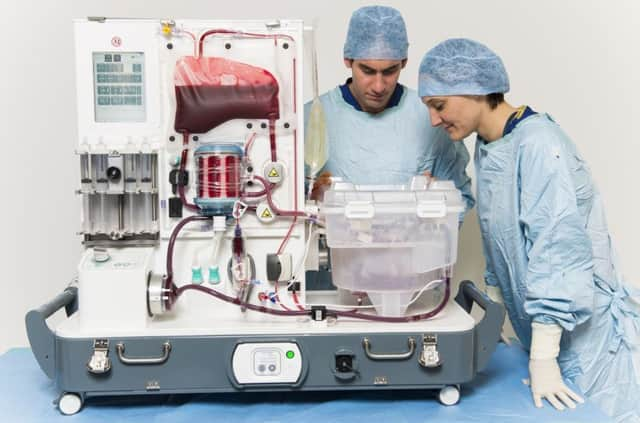Liver machine to '˜transform' organ donation


The normothermic machine perfusion process maintains the liver at body temperature, supplying it with oxygenated blood, medication and nutrients – similar to a patient on life support.
When compared to a standard technique, it increased the number of livers suitable for transplant, preserved them for longer and reduced the amount of injury to the organ, according to research published in the journal Nature.
Advertisement
Hide AdAdvertisement
Hide AdLivers are conventionally kept cold in an ice box as they are transported to the patient for transplant, which can cause damage.
A study of 220 liver transplant patients – the first randomised controlled trial to compare normothermic machine perfusion with cold storage – found the method led to a 50 per cent reduction in graft injuries. There was also a 54 per cent increase in the mean duration over which livers were preserved, and a 50 per cent lower rate of organ discard. This meant 20 per cent more livers were transplanted, figures which researchers hope will be replicated in a clinical setting.
Lead author David Nasralla, from the Nuffield Department of Surgical Sciences at the University of Oxford, said: “The biggest challenge facing liver transplantation around the world is the desperate shortage of donor organs, with approximately one in five patients in the UK dying whilst waiting for a liver transplant.
“In our study, not only have we shown that livers preserved using normothermic machine perfusion have better outcomes after transplantation, but also that these findings were achieved in the context of better organ utilisation and longer preservation when compared to conventional cold storage in an ice box.
“If these findings can be translated into clinical practice it could have a transformative effect on transplant waiting list mortality.”
Many potential donor organs cannot currently be used because “sub-optimal” livers do not react well to cold storage. Surgeons also have no reliable way of testing if they will work properly before the transplant. However, the machine – the result of more than 20 years of development – is able to perform tests to see how well a liver would function after transplant.
While the trial only examined livers which would be deemed suitable for transplant under standard practice, the technology could allow surgeons to consider a wider pool of donor organs.